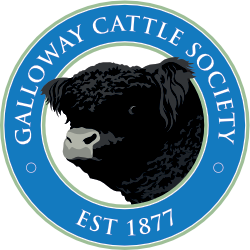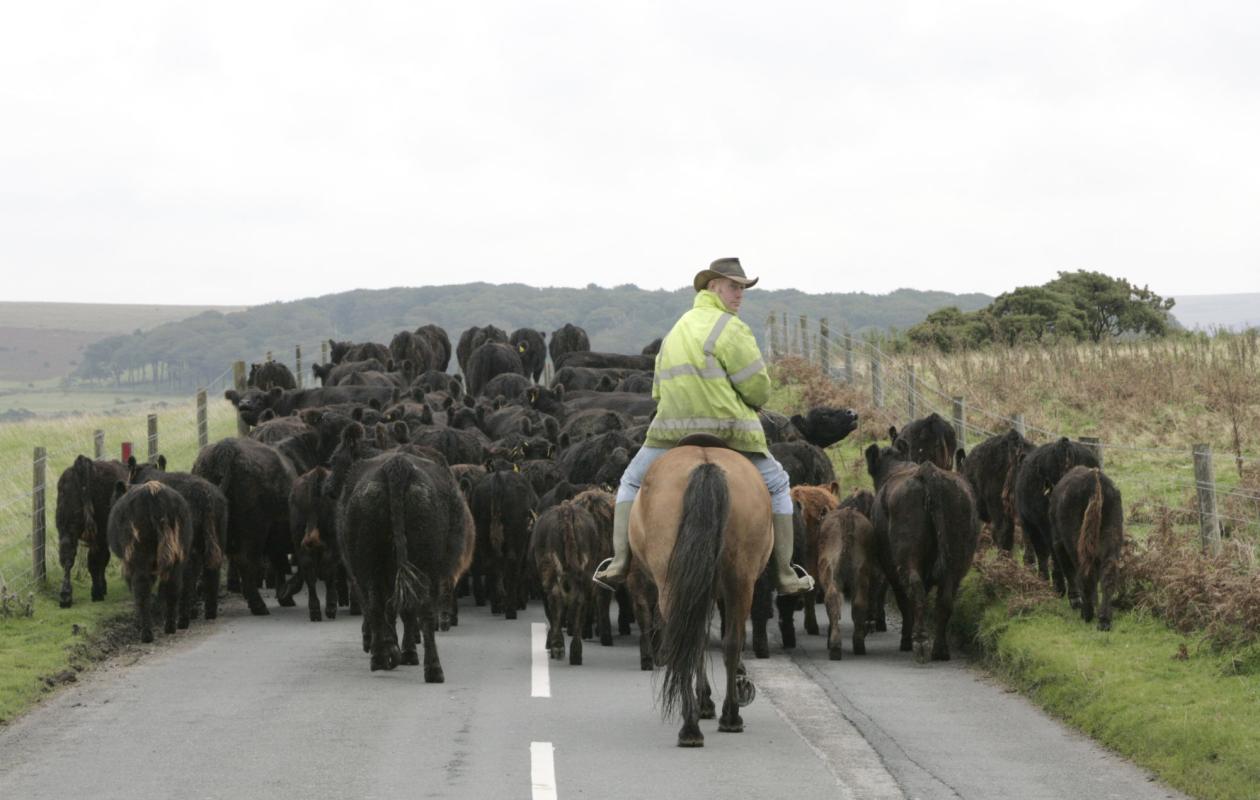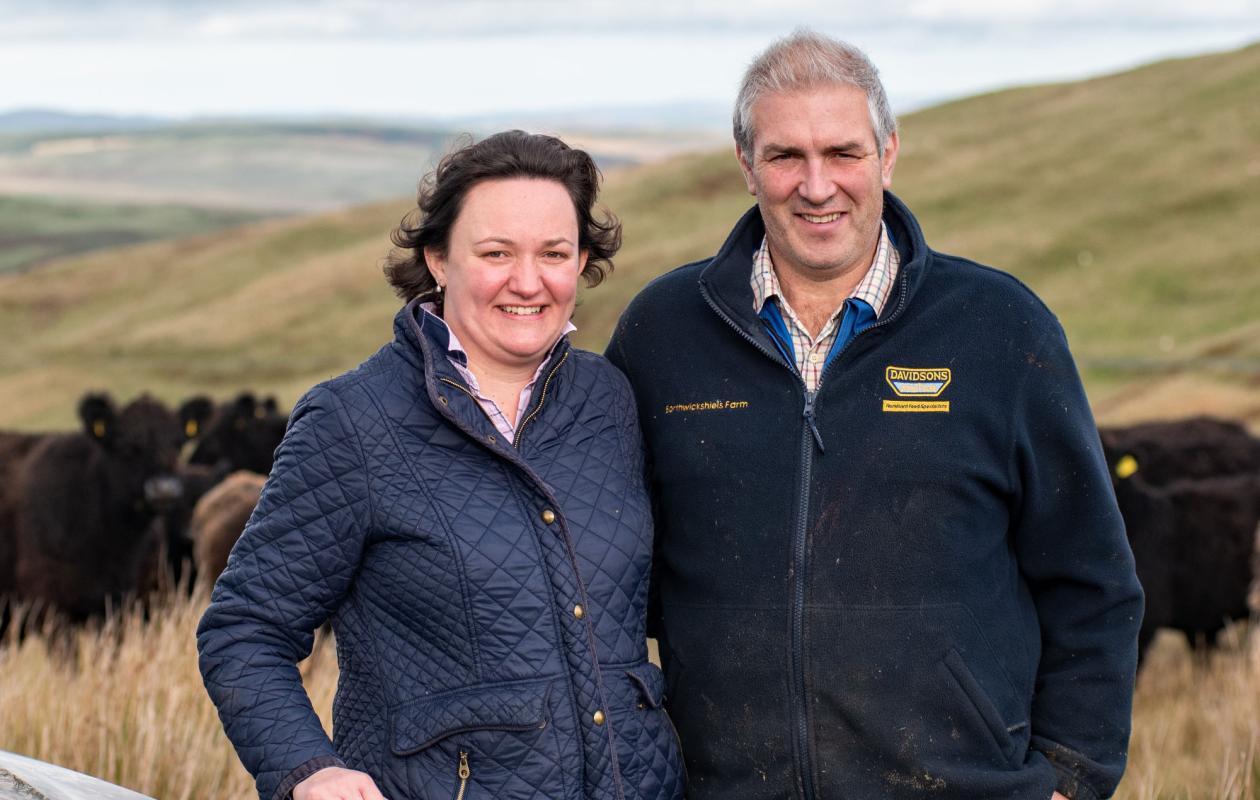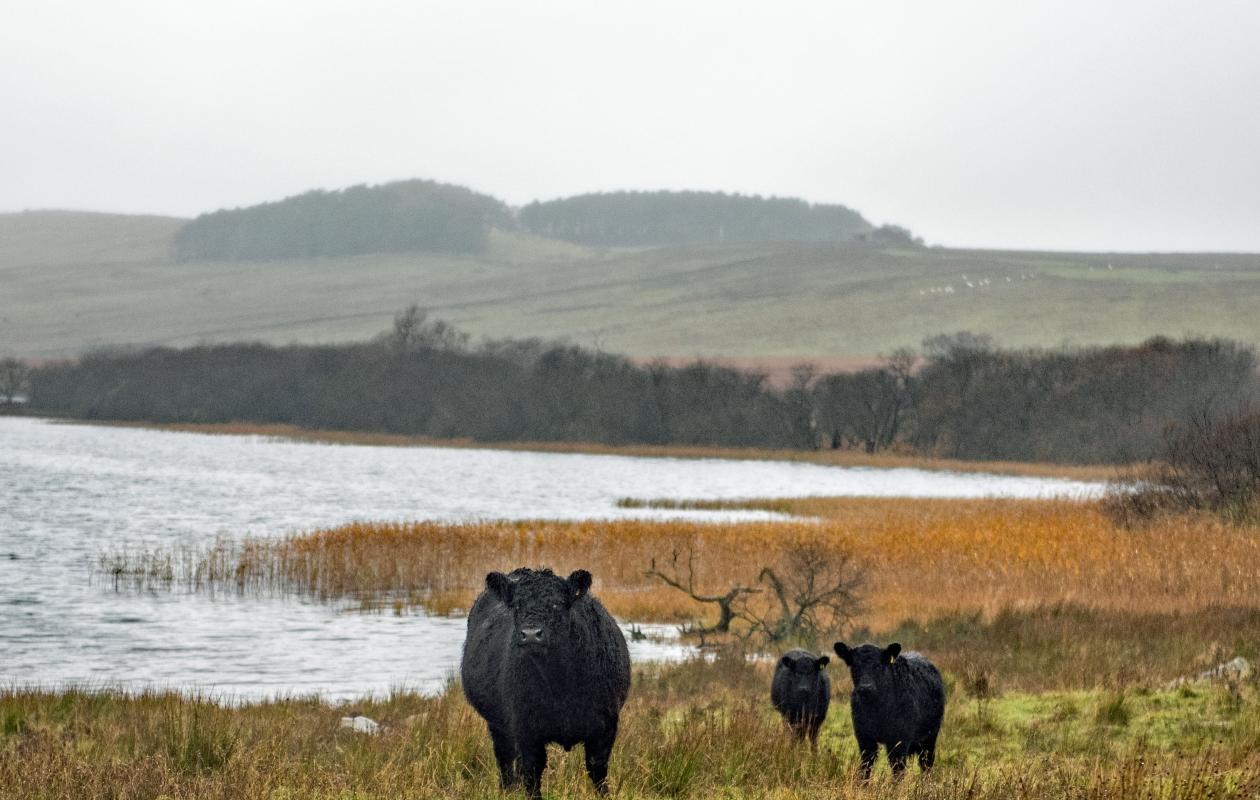Richard and Clare Packer never intended to farm - but they seized the opportunity when they got it and are building their enterprise around low input pedigree Galloway cattle and easily managed sheep.
Four generations of the Murrays have farmed in the Coquet Valley but when John Murray decided to hand over the business at Cartington Farm, near Thropton - he offered the opportunity to his daughters.
“I’m one of four daughters and on Boxing Day 2011 Dad said to us all - ‘There’s a business here and if any of you are interested, now is the time to get involved,’” said Clare.
Clare had grown up with her parents John and Rosalind and her three sisters at Cartington Farm on the Armstrong Cragside Estate and, while she had enjoyed working with the sheep back then, farming had not been her intention.
“My parents have worked with the Farming Community Network and they know that a lot of farmers do not think through succession but my Dad has and he has been prepared to hand over the business. It has been quite a process to do it !
“I am the eldest daughter and I was the most keen on farming, mainly with the sheep. But I also know how hard farming is,” said Clare, who also works part time as a teaching assistant.
Richard had grown up around farming and was a director for a pharmaceutical company at Morpeth but the pressures of working for a global company were taking their toll and he decided to quit.
Richard began doing countryside work in the area and on the farm and he and Clare moved back to Cartington in 2014 to the house where she was born.
“Dad had sold his suckler herd some years previously when he was seriously ill, investing what he got for the cows back into property, and he had reduced stocking levels so that he could manage, so for us it was almost like having a blank sheet of paper to work on. We set about making a 10-year plan,” said Clare.

Richard added: “With me coming from a non-farming background I was thinking about what we would do if we didn’t get subsidies and how we could create a profitable business.
“I was thinking how we could farm in an economic, environmentally friendly and sustainable way and also enjoy what we were doing,” he added.
Cartington Farm runs to just over 1,300 acres, 640 of which is heather hill running up to 300 metres above sea level. There are 120 acres of temporary grassland with 390 acres split between improved and permanent pasture, including productive rigg and furrow.
A further 120 acres of arable ground is contracted out for growing barley and wheat which is sold off the farm.
Cartington Hill is in Higher Level Stewardship and already the grazing has improved for the sheep with less bracken and more grasses as a result of the cattle and also some Exmoor ponies that run on the rough ground.
“I had done a lot of research. We needed a suckler herd and because half the farm is heather hill with rough grass and bracken we needed cattle with bigger mouths that would thrive and outwinter and the choice came down to Galloways or Highland cattle,” said Richard.
“We decided on the Galloways and in 2017 we bought 10 in-calf heifers from the Beanley herd at Hedgley Farms near Powburn where the manager Vicky Hogg has been a great help to us. We have been really fortunate that there a lot of good farmers in the area who have been prepared to share their knowledge with us,” he added.
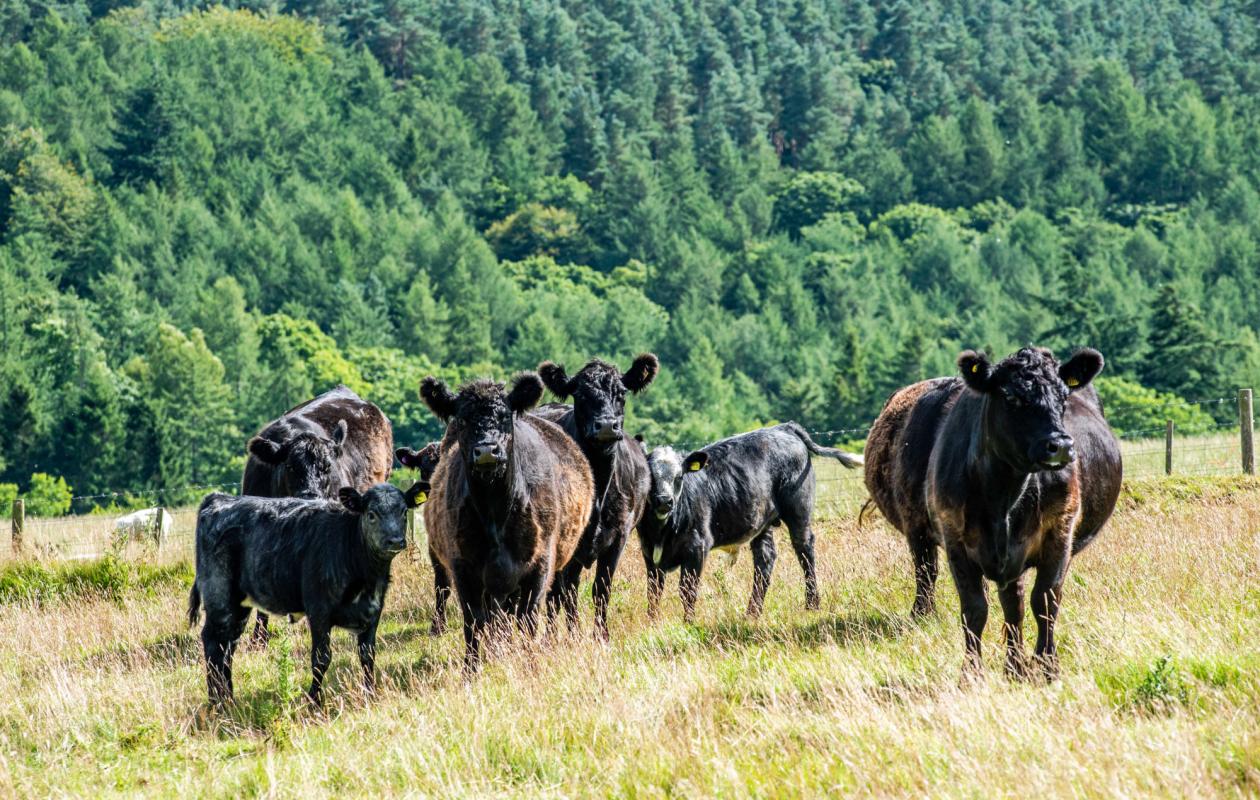
“I could see that the Galloways would calve on the hill but I hadn’t worked with cattle for about 30 years,” said Clare. “It has been quite easy to get back into handling the Galloways. I’m confident with them. Richard walks around the cows when he’s checking them which helps keep them quiet.”
All the cattle are registered under the Cartington prefix and the Packers have found membership of the Galloway Cattle Society invaluable for getting additional help and advice.
Since then, a Beanley bull, Jacobite has been purchased as well as a Whitebred Shorthorn bull from Adrian and Janice Wheelright’s Longley herd at Kinross to run with some of the Galloways and a small herd of four Whitebred cows. Six Galloway heifers were purchased from Michael and Caroline McCornick’s Barquhill herd at Wigtown in 2018.
A further six Galloway heifers and four cows with calves at foot were purchased in 2020 from John Teare’s Ballavair herd on the Isle of Man to run with Jacobite while the other females go to the Whitebred bull.
Last year the first four home-bred Blue Grey heifers were sold at the Newcastleton sale where they averaged £960 a head aged between 14 and 16 months.
Six Belted Galloways females were bought from Hedgeley and a bull from Michael Wentworth Waites’ Thornthwaite herd of Belted Galloways at Bampton in Cumbria.
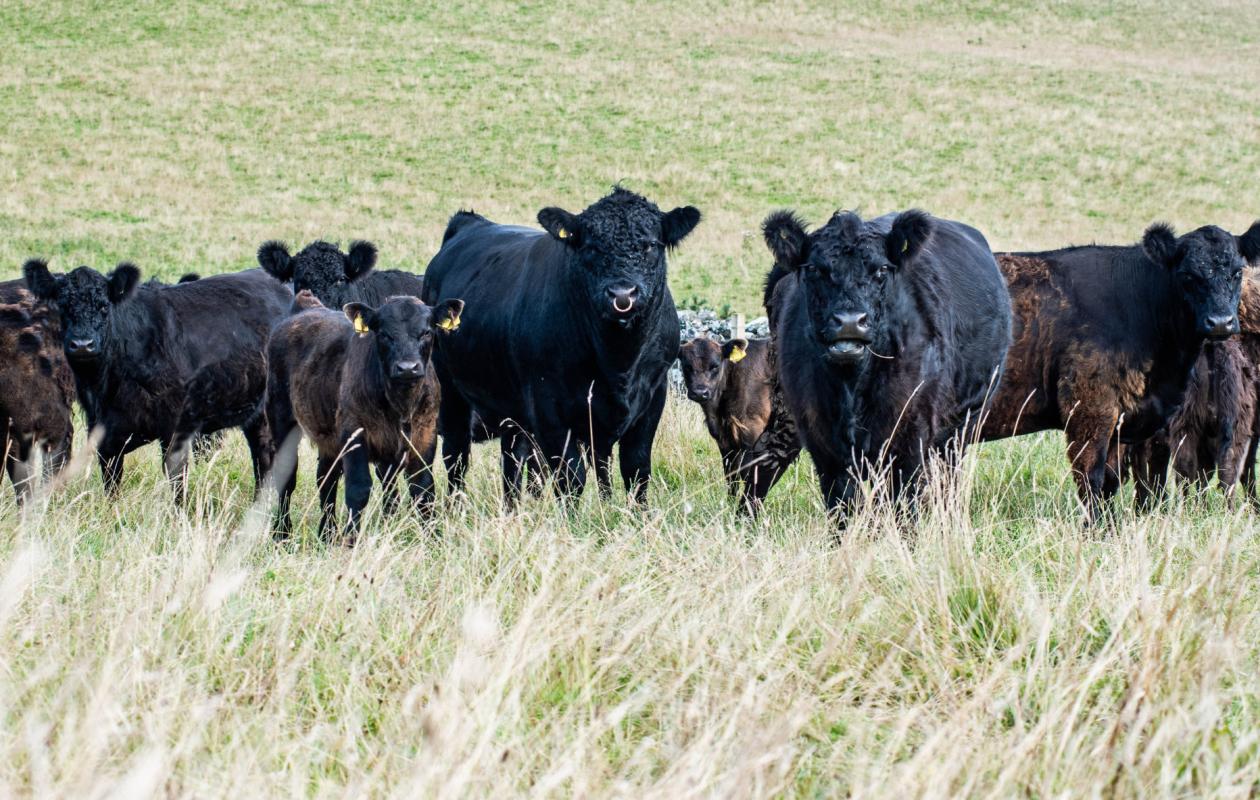
Now the suckler herd numbers more than 50 cows, 33 of which are Galloways.
The majority of the herd calves in the spring on the hill with seven or eight calving in the autumn. The cows are rearing 40-60% of their bodyweight at weaning. They are proving to be very fertile
When the calves are weaned in December they are housed for four months, fed silage and some cereal mix purchased from a local farmer. They are then extensively grass fed and reared the following summer.
The Galloway steers are finished off grass at between 26-29 months old with the Blue Greys at 24-26 months. All have graded and killed out well.
The cattle inputs are silage, straw which is grown at home, a small amount of feed for the spring calves when they are housed and vet and med bills. “They are making a real healthy margin. They are not drawing down fixed costs yet because we are still buying cattle and investing in some machinery - last year we bought a bale unwinder as we are trying to target bracken beds on the hill. Ultimately the cattle will clear a profit,” said Richard.
Richard said: “I had always wanted to sell meat direct to the customer. I had the plan but I didn’t know how to do it! Then by chance I met a local small holder and butcher Lee Gray from The Christmas Farm, Longframlington, who offered to butcher and pack the meat for sale.”
The beef is vacuum packed and sold chilled in boxes of around 11kg with a variety of cuts including joints, steaks, stewing steak and mince
“We sold our first steer in the autumn of 2020 and we have sold several beef boxes as well as lamb since then. We started a Facebook page and we now have about 60 customers and a waiting list for the meat.
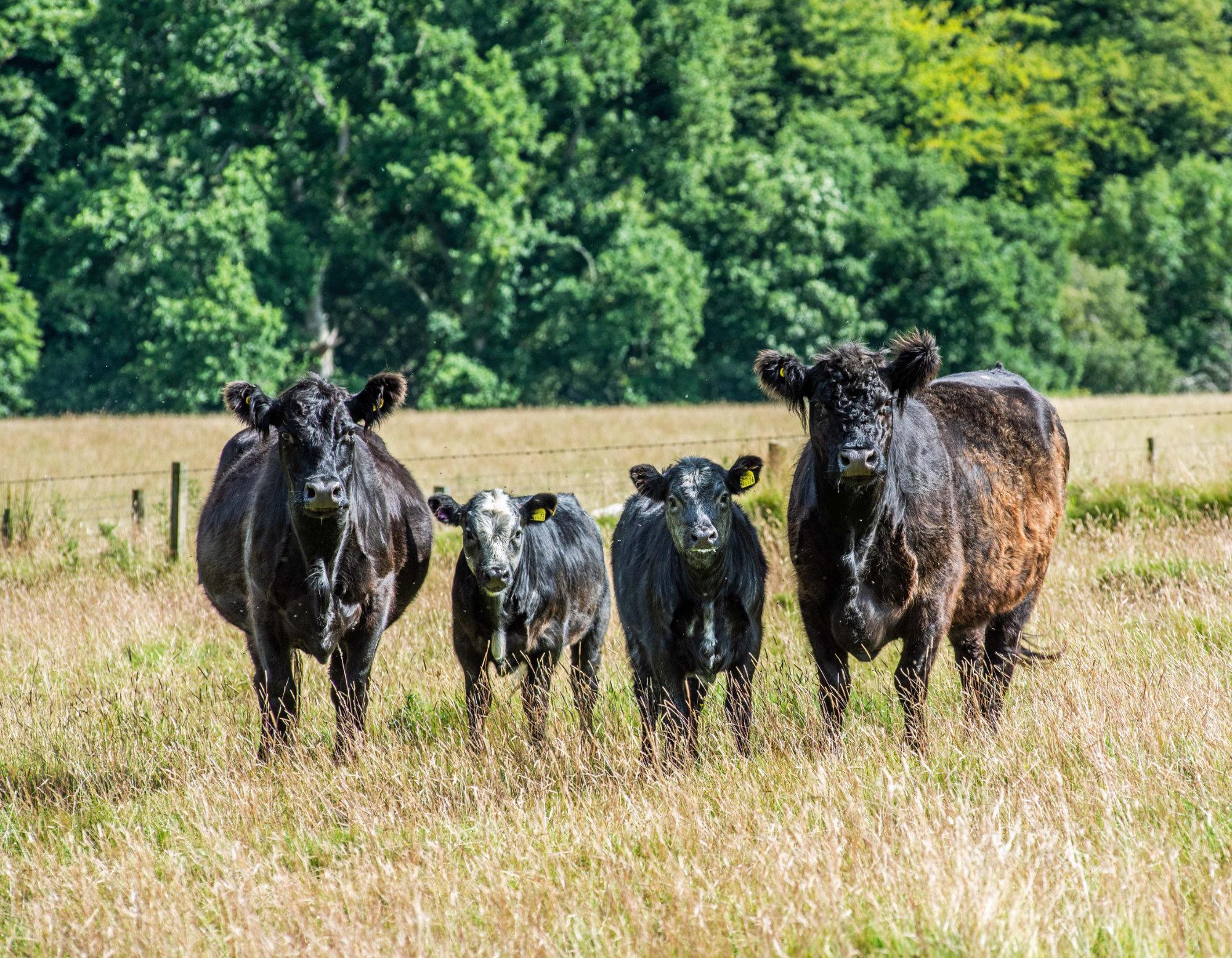
“Selling direct has just fallen into place. It’s serendipity - like a lot of things have been for us on this journey,” said Richard.
“It has been a great experience. The customers come to the farm to collect their meat box and they are able to see how the animals are reared. The feedback has been very positive with customers saying they can taste the difference.”
*** The finished cattle are killing out at between 55-60%. Taking all costs into consideration, the Packers are making between 30-40% more margin than selling at the mart, although they intend to sell through the mart as well as direct sales through the year.
“Selling the meat direct to the customer has to be attractive on many fronts to the customer, not just what is being sold but also the pricing of the product,” said Richard.
“We really wanted to attract people to the product, but also for them to come along and see the farm and give them a chance to have conversations , to do that we didn’t feel we could give the product a premium price even though we do believe it is a top class product
“We have priced the boxes at £110 and have been reliably told the equivalent would retail for upwards of £180 but our mentality is we are still making a better margin this route and we are having no difficulties in selling our product and generating the conversations, which had been our goal. Its important not to be greedy,” he added. ***

Like the need for the low-input cows, the sheep enterprise has had to change to reduce costs and management and dovetail with the cattle.
The farm used to run a flock of 700 ewes, 400 of which were Mules and Texel crosses which were lambed inside.
Now there are 600 ewes, 300 of which are pure Lleyns. There are 150 Blackface ewes, half of which are bred pure and the remainder go to the Lleyn to generate a Lleyn mule which can run on the hill. These crossbred females go to the New Zealand Texel which the Packers have found to be hardy and easily lambed because of a smaller head.
All the ewes are lambed outside on the pasture fields. Three quarters of the lambs are finished off the farm off grass with the rest sold store with no supplementary feed.
“We used to buy between 16 and 20 tonnes of feed a year for the ewes - last year we purchased four tonnes,” said Richard.
“There are a lot of things we can’t control and looking to the future is a bit of second guessing,” said Richard. “Going with the Galloways surely has to be the right choice. They are grass fed, low cost, productive animals that spend all year outside and because of their non selective grazing they are improving the habitat and the environment. We are also seeing that people are more keen to buy locally grass reared meat and we believe you can taste the difference”
